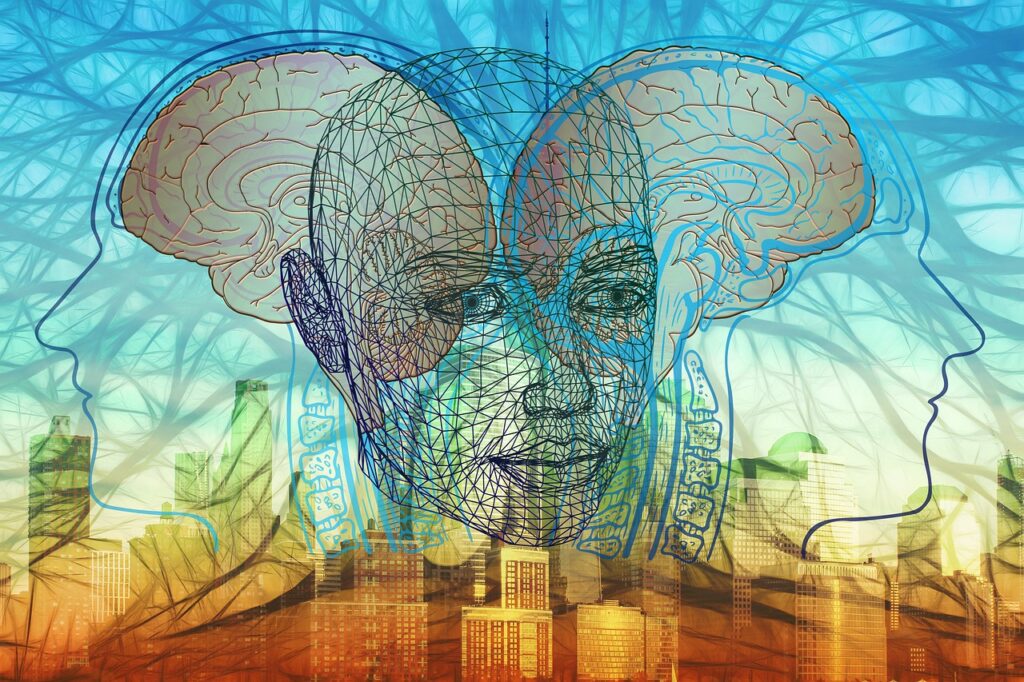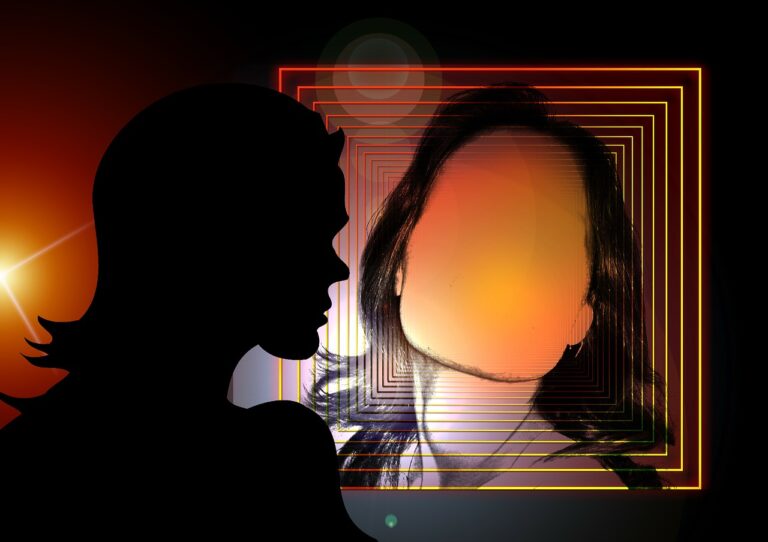
The X-Files of Neuroscience
Capgras syndrome
This entry into the X-Files of neuroscience is fascinating, albeit a little heartbreaking. Capgras syndrome is a specific situation where familiar people seem like strangers. Your mother may look like herself, sound the same and even have the same memories as her, and yet you do not recognise her as your mother, only a lookalike or imposter. This delusion may also be transferred to objects such as your house, whereby you believe you are viewing another home, even though you realise it is very similar to your own. Capgras syndrome is often a symptom of a psychiatric disorder or dementia, but can also be caused by brain injury, infection or drug abuse.
Named after the French psychiatrist Joseph Capgras, who first described this phenomenon in 1923, it would have been an odd and unusual symptom to rationalise, and even a century later, the precise reasons remain a mystery. In 1991, M. David Enoch and William (Bill) Trethowan [1] attempted to solve this mystery by seeing it not as a neurological abnormality, but as a psychological dispute with your own inner love-hate conflict, directing hate towards the imposter but retaining a love for the original person.
This may help to explain the relationship with familiar people, but it fails to explain why this delusion spreads to objects and locations such as a person’s house. From a neuroscience point of view, it is thought to involve the visual and memory parts of our brains, and how they are connected to our emotional areas throughout the limbic system. This would explain why the brain can recognise a familiar person yet is unable to couple it with the correct emotional context, resulting in your mother feeling like a woman you may know but have no emotional connection with.
This seems sensible when we consider the following case study, where a man developed Capgras syndrome after a car accident had left him with a traumatic brain injury. [2] After apparently recovering well he was able to identify his parents but only as imposters who looked and acted like them. Rather interestingly, this was not the case if they were talking over the phone, when he would readily accept that they were his parents. Scientists concluded that when the visual cortex in the brain wasn’t needed, such as when speaking on the telephone and not speaking with his parents in person, the memories and emotional context remained coupled, meaning he could freely engage with his parents without any delusional distractions. This adds to the weight of evidence suggesting that Capgras syndrome results from a disconnection between the visual and emotional regions in the brain.
Another case study from a 77-year-old woman explains even more of this phenomenon. She was found by her son talking to a person in the mirror. Being deaf, she was using sign language, and when asked about this other woman in the mirror, she told her son that although she looked similar to herself and even had a similar life story, she could not possibly be the same person. She knew this because of the poor use of sign language from the other woman. She could identify other reflections in the mirror as simply reflections, but her own would appear to her as a new person. What neuroscience tells us is that the part of our brain responsible for facial recognition is predominantly in the right hemisphere. When scientists studied her brain, it became apparent that there was a noticeable reduction in the size of the temporoparietal region on the right side of the brain, an area involved in cognition, memory and language, which may help to explain some of these occurrences. Although we understand the brain at a much deeper level than in 1923, Capgras syndrome is not yet fully understood, but cases such as these may help neuroscientists to discover more.

Blindsight
At the back of the brain we have the occipital lobe. This region receives images from our eyes and optic nerves and decides what we are seeing before sending that information to other parts of our brain to determine how to react. So, if we see an adorable fluffy dog, the light reflected from that dog travels to our retina at the back of our eye, along the optic nerve and to the occipital lobe, where it is processed by the primary and secondary visual cortices. Other areas (frontal cortex and limbic system) then interpret the meaning and decide what the emotional response should be, resulting in a very excited ‘Aww, a cute puppy – I like this, I feel happy!’
However, damage to the occipital lobe, for example, through trauma, a brain tumour or a stroke, can result in the images of the cute puppy arriving at the visual cortex but not being processed or transmitted to other areas of our brain, and hence, we become blind. This is a little different to instances where the eyes or optic nerve don’t function. This additional blindness is termed cortical blindness – essentially, blindness in the brain. You may be asking why this chapter is talking about cute puppies and blindness. Well, because in some people with cortical blindness, even though they can’t see particular objects, their subconscious brain still perceives them. This means a person can interact with something even if they don’t actually see it. Let’s use another example. Say you want to walk across the room to the doorway, but there is a chair in your path. Under normal circumstances, you would see the chair and walk around it. A person with blindsight would also walk across the room and avoid the chair, yet they would not actively see that there is a chair in the room. They simply avoid it but do not fully understand why.
This strange phenomenon was first documented in the 1974 research by Lawrence Weiskrantz and has since been recorded in all manner of situations. [3] A person may catch a ball in mid-air without ever seeing it, for example, but perhaps the most interesting study shows how it is possible to identify facial emotions and even mirror those same emotions in your own face, without ever being consciously aware of seeing any facial expressions.
Blindsight has been rigorously tested in many experimental settings, and as such, neuroscientists think they have an explanation. Firstly, the fact that some people with cortical blindness experience the phenomenon of blindsight may be because the superior colliculus – an area of the brain important in visual orientation – is preserved. [4] Although we don’t yet fully appreciate the full function of the superior colliculus, we do know that this area receives information about what we see and converts it into signals that initiate an appropriate movement. To help explain this, imagine sitting down and watching a racing car drive past. Our eyes and head would instinctively follow the car as we track its movements. This is the responsibility of the superior colliculus, to instinctively monitor the environment and decide how to move our body.
The current hypothesis for blindsight states that as the brain senses damage to the occipital lobe, it starts to rewire itself to bypass the primary visual cortex, and with the help of the superior colliculus send the information through an area called the lateral geniculate nucleus in the centre of the brain. The person may never entirely regain normal vision, but they may still be capable of living a normal life. Some neuroscientists suggest that this is a process by which the brain reverts back to a more basic form of vision, and one that is seen in animals who naturally lack the advanced visual areas of a human brain.

High places phenomenon
Have you ever been standing at the top of a tall building or cliff edge and had a sudden but brief urge to jump? You have no real thought of actually doing it, and you are not depressed, suicidal or otherwise distressed, but that urge appears, nonetheless. As it turns out, neuroscience has a name for such an occurrence – the high places phenomenon, sometimes termed the call to the void – and it is actually very normal and common. There are also reports of impulses to jump in front of a train, stick a hand in a fire or turn a steering wheel into traffic. Thankfully, the person generally doesn’t follow through, and although most accounts of this phenomenon are anecdotal, there is one team of scientists in Florida, USA, who decided to take another look. [5]
The research team asked 431 students about such episodes in their personal lives, and a surprising 55% acknowledged that they have experienced them at some stage in their lives. As neuroscientists, we are yet to comprehend why these thoughts occur, but evidence from this study highlighted increased levels of anxiety correlating with an increased frequency of these intrusive thoughts. [a] Anxiety, not uncommon amongst students, may have resulted in a higher frequency compared with the general public. Just why anxiety would influence this behaviour is yet to be studied.
Science has, however, revealed to us that the high place phenomenon is possibly the result of a split-second delay between two opposing brain signals. One signal is based on our survival instinct that notices danger and tells us that we should avoid it, such as falling from a great height or a train hitting us in the face. Another signal coming from our more logical brain tells us that we are relatively safe where we are, and there is no real threat to our survival. The resulting signals are interpreted by our brain – now somewhat confused – for it to relay this rather bizarre message and we experience the high places phenomenon. So, if you ever have a sudden impulse to jump off the top of Mount Everest, just remember that it is normal, but please don’t do it anyway.
[a] Be aware that if these thoughts occur regularly and last longer than a brief moment it may be a sign of something more serious and you should consult a medical professional.
If you enjoyed this, why not read more?
A Million Things To Ask A Neuroscientist – the brain made easy (Mike Tranter)
References
1. Enoch & Trethowan (1991). Uncommon psychiatric syndromes. (3rd ed), Oxford, Boston; Butterworht-Heinemann.
2. Hirstein & Ramachandran (1997). Capgras syndrome: a novel probe for understanding the neural representation of the identity and familiarity of persons. Proc Biol Sci; 264 (1380).
3. Weiskrantz, et al. (1974). Visual capacity in the hemianopic field following a restricted occipital ablation. Brain; 97 (4).
4. Ajina, et al. (2020). The superior colliculus and amygdala support evaluation of face trait in blindsight. Front Neurol; 11 (769).
5. Hames, et al. (2012). An urge to jump affirms the urge to live: an empirical examination of the high places phenomenon. Journal of Affective Disorders; 136.